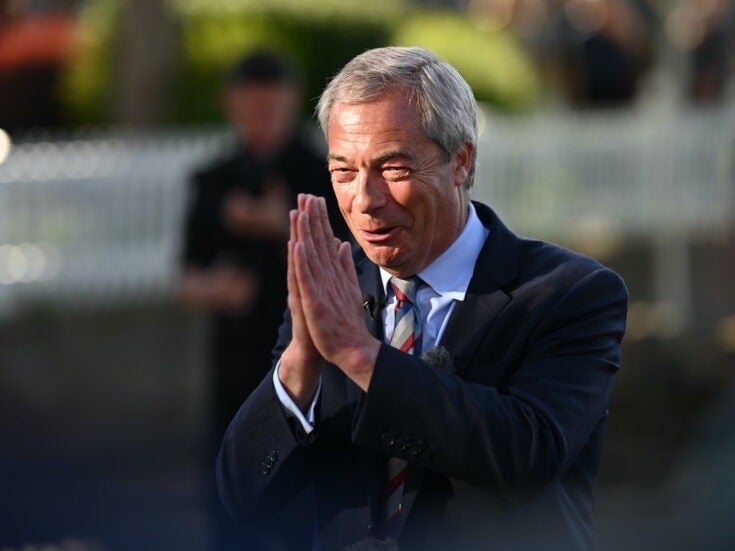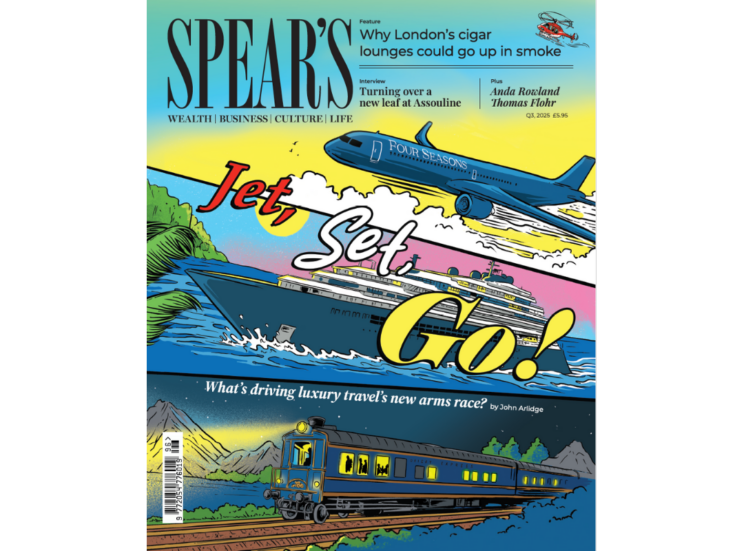Art, maths, finance, emotion – all are connected, but the connections are not often explored. That’s what Open Outcry, a new opera about trading, hopes to redress, says co-creator Greg B Davies of Barclays
Art, maths, finance, emotion – all are connected, but the connections are not often explored. That’s what Open Outcry, a new opera about trading, hopes to redress, says co-creator Greg B Davies of Barclays
TRADERS IN THE stock market make all kinds of noise: they shout, they scream, they groan, they even cry out in pain or joy. But rarely are the sounds they produce harmonious – musical even. Open Outcry, a new opera I’ve co-created, which receives its premiere this Thursday in the Egyptian Hall of Mansion House, changes that by making traders sing their trades, transforming noise to music and highlighting the art hidden in markets.
Music is maths. Music is emotion. Two statements that are in no way contradictory, but do appeal to quite distinct systems in our brains: the emotional/intuitive, and the deliberative/logical. This division, increasingly explored by behavioural scientists in recent years, is fundamental to how we make decisions in a complex world.
Finance is maths. Finance is emotion. Again, no contradiction here: finance is inherently mathematical, and yet the markets are ultimately driven by humans. However, it is only through the advent of behavioural finance that we’ve truly come to realise the dominant role that emotion plays in financial decisions.
Of course, finance has always influenced the direction of art through the essential pressure of patronage, but very seldom has the financial world as used creative inspiration for art, much less treated as itself inherently artistic.
Watch a trailer for Open Outcry:
Look beyond the money, however, and markets have a deep internal beauty born of the interaction between the market structures on the one hand, and the goals, emotions and actions of individual traders on the other. We’re used to seeing this complexity compressed in functional graphs and scrolling numbers, but strip away the mudane and we reveal something more akin to the intricate synchrony of huge wheeling flocks of birds.
The immediate need for protection, or food, of each bird aggregates in the group into astonishingly complex, yet beautiful, patterns. In a market, individual motivations are more complex. It is the emotions – hope, fear, greed, anxiety – of investors, all with different goals, time frames, and intentions that combine in chaotic patterns of fractal beauty.
SOME YEARS BACK composer Alexis Kirke approached me as a practitioner in behavioural finance to help him create a musical performance out of a functioning market, knowing nothing at the time of my musical dabbling as a serious, yet amateur, singer. I was intrigued. His central idea, that emotion and behaviour in pursuit of financial goals could be rendered in a sonic way, was highly compelling.
He has previously created sound art based on the rising sun, and on subatomic particles – his aim being to create ‘beautiful musical experiences’ from raw information – but this time the idea was to use a method beloved of experimental economists for studying market behaviour under controlled conditions. In Open Outcry we create an artificial, but functioning market… and transform its energy into music by the simple expedient of making the traders sing their trades, rather than shout.
Directed by innovative opera director Alessandro Talevi, Open Outcry features twelve singer-traders and cellist Joseph Spooner. The audience are to sit at tables in the centre of the trading floor, surrounded by the singer-traders. Large screens will display the information they need to respond to the evolving market.
They sing a specific phrase to buy each asset, and another to sell. The music is generated spontaneously from the traders responding collectively to the emotions experienced in trying to achieve their single goal of making money, the invisible hand of the market rendered audible. The traders become instruments; the market becomes the musician – improvising, and generating complex emergent patterns within the bounds of the only thing we control, the market structure.
This structure is deliberately simple: there are only three financial assets (Wealth, Protection and Comfort), which represent trade-offs we all make as investors. But like real assets, these combine in complex ways. The prices are generated by a probabilistic computer model which mimics the patterns of real markets, as the market shifts between three regimes (boom, normal and bust) which Alexis, as conductor, will have some power to influence.
The phrases are composed such that when the market is rising, all the buy phrases sung together are harmonious; and when two singer-traders lock into a trade, the patterns fit together in a tight harmony; but when the market is dominated by sell phrases, discord and cacophony result.
EVEN THIS PARED-DOWN market places massive demands on the singer-traders, all of whom are drawn from one of London’s most adventurous chamber choirs, The Elysian Singers: they must monitor their portfolios; form expectations of asset price trajectories; and be alert to all other offers in the market.
They must recall the phrase to buy or sell each asset, and adapt this dynamically to alter quantity and price, before pitching it precisely despite the market frenzy, in time with the rhythmic pulse. They must bargain to close the deal, which, as in a real open outcry market, requires simultaneous hand signals to ensure clarity to defeat distance, and conflicting trades. Oh, and the model has a feedback loop so that their collective actions influence the market in turn…
This pioneering musical event is to be presented in the wider context both of and talks drawing together the worlds of art, music and finance, including Oxford mathematician and author Marcus du Sautoy, and an exhibition of art by financial adviser and artist Carl Richards, author of The Behaviour Gap.
Open Outcry closes the loop: music as finance; finance as music.







